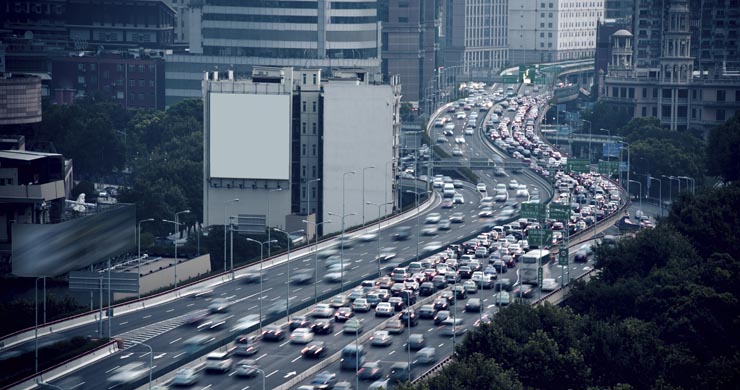Traffic report
1. Queues on the Menai bridges leaving Anglesey
There are fewer jobs on Anglesey than on the mainland. Many people have to commute to get to work. Anglesey’s biggest single employer, the aluminium works in Holyhead, closed in September 2009. This means that more people than before have to commute east to get to work.
2. Wrexham traffic jams
Wrexham is North East Wales' most industrialised area. Many people in the area have to commute making the roads very busy. This means that a single breakdown can cause traffic jams for miles.
3. Mid Wales storm damage near Newtown
Flooding in Mid Wales is quite common during the winter. This is because streams and big rivers like the River Severn flow through this area. Along the west coast of Wales where there are a lot of hills, high winds and heavy rain cause traffic problems. These problems are far more common in these areas than anywhere else in the UK.
4. Traffic jams into Cardiff on the A470
Many people live in the old mining towns north of Cardiff. When the coal mines closed down people went to work in the city. This means that many more commuters travel into Cardiff along the M4 corridor. Traffic jams happen here every day!
5. Motorway road works north of Cardiff
The M4 was built 30 years ago with just two lanes each way on the section north of Cardiff. Two lanes are no longer enough. Work to increase the number of lanes has caused traffic delays for the past three years.
6. Train services OK, but for delays on the Taff Valley commuting line
A network of railway lines link the South Wales valleys to Cardiff and Newport. Many commuters and shoppers rely on this network, but any railway can be disrupted by bad weather causing flooding or even fallen trees and leaves on the lines.
7. Storm delays - ferries Fishguard and Rosslare etc
The fast-ferry service cannot sail when there are storm conditions in the Irish Sea. The slower ‘super-ferry’ can cope much better, but both ferries are cancelled in severe storm conditions.
8. No delays - Cardiff Wales airport flights
Cardiff Wales Airport is rarely closed, but strong winds, mist and fog from the Bristol Channel can cause severe weather conditions which means authorities have to close the airport.


